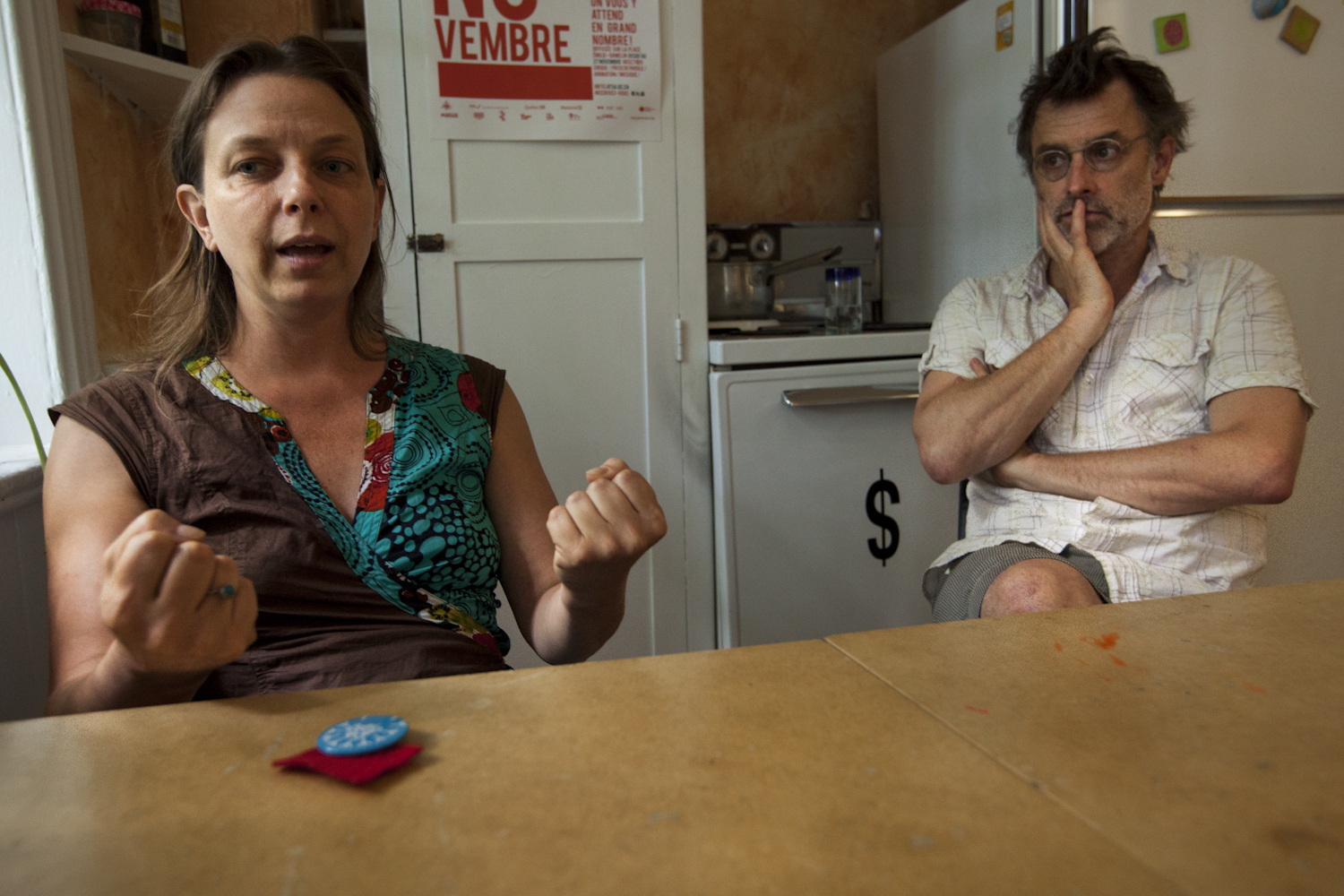Contrary to the wishes of Quebec’s establishment, tomorrow’s vote, regardless of the result, will not mark the end of what has come to be known as the Maple Spring. The impact and the inspiration provided by Quebec’s carrés rouges, which has spread all across Canada and even around the world, will long outlast Jean Charest.
Journalists Jane Gatensby and Nicolas Quiazua compiled these profiles over several weeks this summer. We will feature them throughout Labour Day and Election Day in Quebec.
*
“A young person who wears the red square, he associates it more with the student movement. Me, when I wear it, it’s more a symbol of everything […] to show that enough’s enough, that we need equality,” says Montreal artist Pierre Allard. We’re sitting around the kitchen table in his studio, just off of rue Saint-Denis.
Allard’s partner, Annie Roy, shows us the “22 Avril” button attached to her own red square. “I wear it like this to connect it to other issues […] the environment, corruption, the Plan Nord […] Occupy Montreal, too, there’s really something more lengthy going on here, a type of awakening,” she says.
Founders of the ATSA (Actions Terroristes Socialement Acceptables), the couple works to inspire the public to action by hosting artistic events and installations. Both readily admit surprise at the strength of this spring’s mobilization.
“For years and years you tell people, ‘go out into the street, yell, take a stand!’ And all of a sudden they all do, so what else is there but to take my casserole and join them?” Roy laughs. “I was proud to see young people take a stand with so much energy.”
“Our daughter went on strike for one week at her secondary school,” adds Allard. “She marched all day, through rain, through snow, she had a red nose and a red square! They really gave themselves to it, I thought that was wonderful.”
As artists, they’re also impressed with the movement’s creativity. “Images, posters, installations, knitting […] it was beautiful, to see all that,” says Allard. “It makes people smile […] I think that when you can make someone who’s against you smile, that’s art!”
“It’s an agent of peace,” Roy inserts, emphasising a strong tie between art and activism. She notes, however, that despite their connection, the two are not the same. “Art transposes you to another world, tries to create a new view of the world. As an activist, that’s what you want too, a better world. The artist wants to inject will, energy […] the activist is a bit more pragmatic, he wants results. When the two meet […] it’s like love.”
Roy and Allard’s experience in activism keeps them realistic about the prospects for change, but they have gained hope from the changing attitudes they see around them. “Now we talk more about a project for society,” says Allard. “How we want to live together, how we want to share our wealth, how we want to go forward from here […] people are ready to talk.”
*
Jane Gatensby is a news reporter for The McGill Daily and a contributor to Ceasefire Magazine. Nicolas Quiazua is Editor-in-Chief at Le Délit.
The interview for this profile was conducted in French and translated by Jane Gatensby.
Photo by Nicolas Quiazua.



